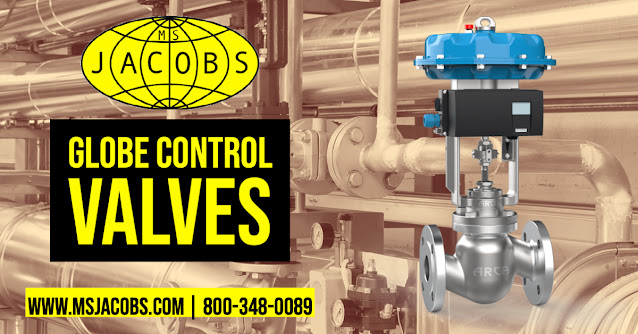Globe valves are typically used in process control applications to regulate the flow of steam or other gases. The valve consists of a cylindrical body with a plug or disc inside that can be rotated to control the flow of fluid through the valve. The disc is connected to a stem, which extends out of the top of the valve and is connected to a handwheel or other actuator.
When the handwheel is turned, the stem moves up or down, which in turn moves the disc in the valve body. As the disc moves towards the valve seat, it reduces the size of the opening through which the fluid can flow, which reduces the flow rate. Conversely, as the disc moves away from the valve seat, it increases the size of the opening and the flow rate increases.
The design of the globe valves allows for a large range of flow control and precise control of flow rate. It also has the capability of both modulating and on-off control depending on the requirement of the process.
There are several types of actuators that can be used to automate globe control valves, including:
- Pneumatic actuators: Pneumatic actuators use compressed air to move the valve stem and adjust the position of the valve disc. They are popular because they are relatively inexpensive, easy to install, and require minimal maintenance.
- Electric actuators: Electric actuators use an electric motor to drive a mechanical linkage that moves the valve stem and adjusts the position of the valve disc. They are typically more precise than pneumatic actuators, and can be controlled by a variety of electronic devices such as process controllers, programmable logic controllers (PLCs), and distributed control systems (DCS).
- Hydraulic actuators: Hydraulic actuators use a fluid under pressure to move the valve stem and adjust the position of the valve disc. They are typically used in large valves or high-pressure applications where high force is required.
- Electro-Hydraulic actuators: This type of actuator is a combination of electric and hydraulic actuator. The electric motor operates a pump that generates the hydraulic pressure which is then used to move the valve stem and adjust the position of the valve disc.
- Smart actuators: Some modern actuators have the capability of communicating and self-diagnostics which is important for advanced control systems, These smart actuators are typically interfaced with digital control system which enables to monitor, control, and adjust the performance of the valve.
It's worth to note that choosing the actuator is depends on the requirement of the process, in term of flow rate, the process conditions, cost, and maintenance.
In summary, globe control valves are used to regulate the flow of steam or other gases in process control applications by adjusting the position of the plug or disc inside the valve body, which in turn controls the flow rate of the fluid through the valve.
